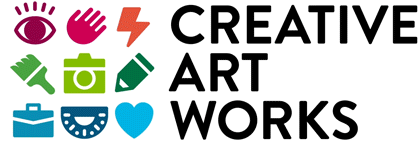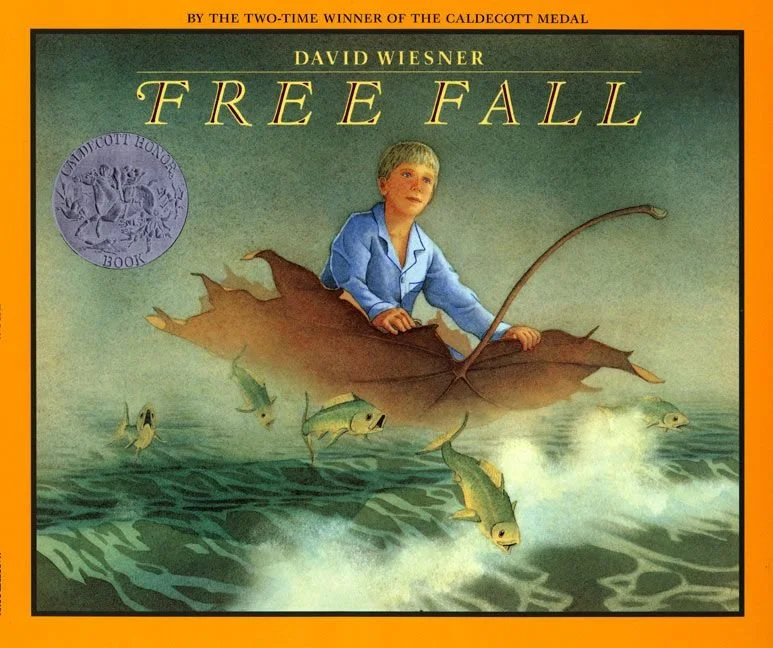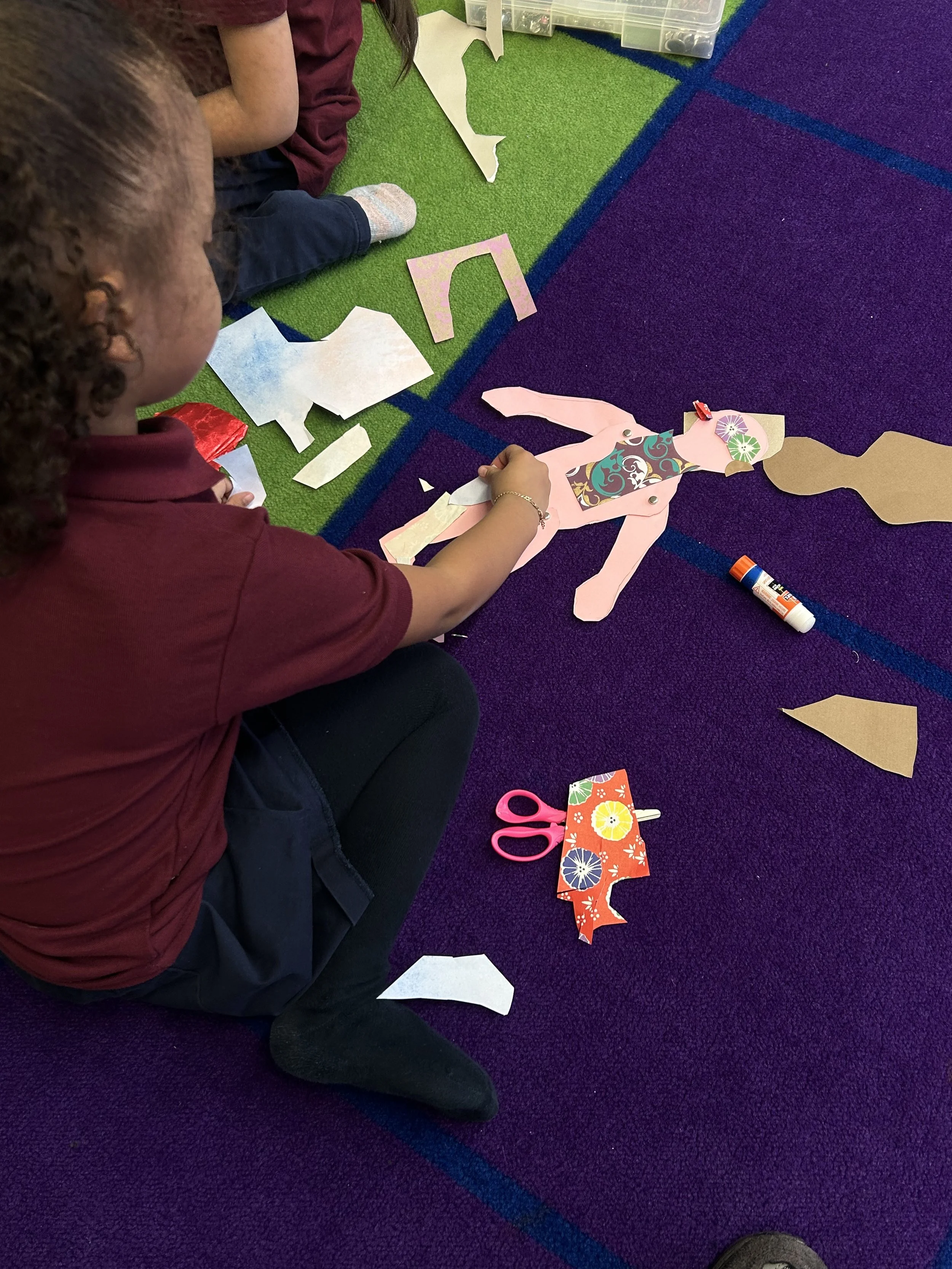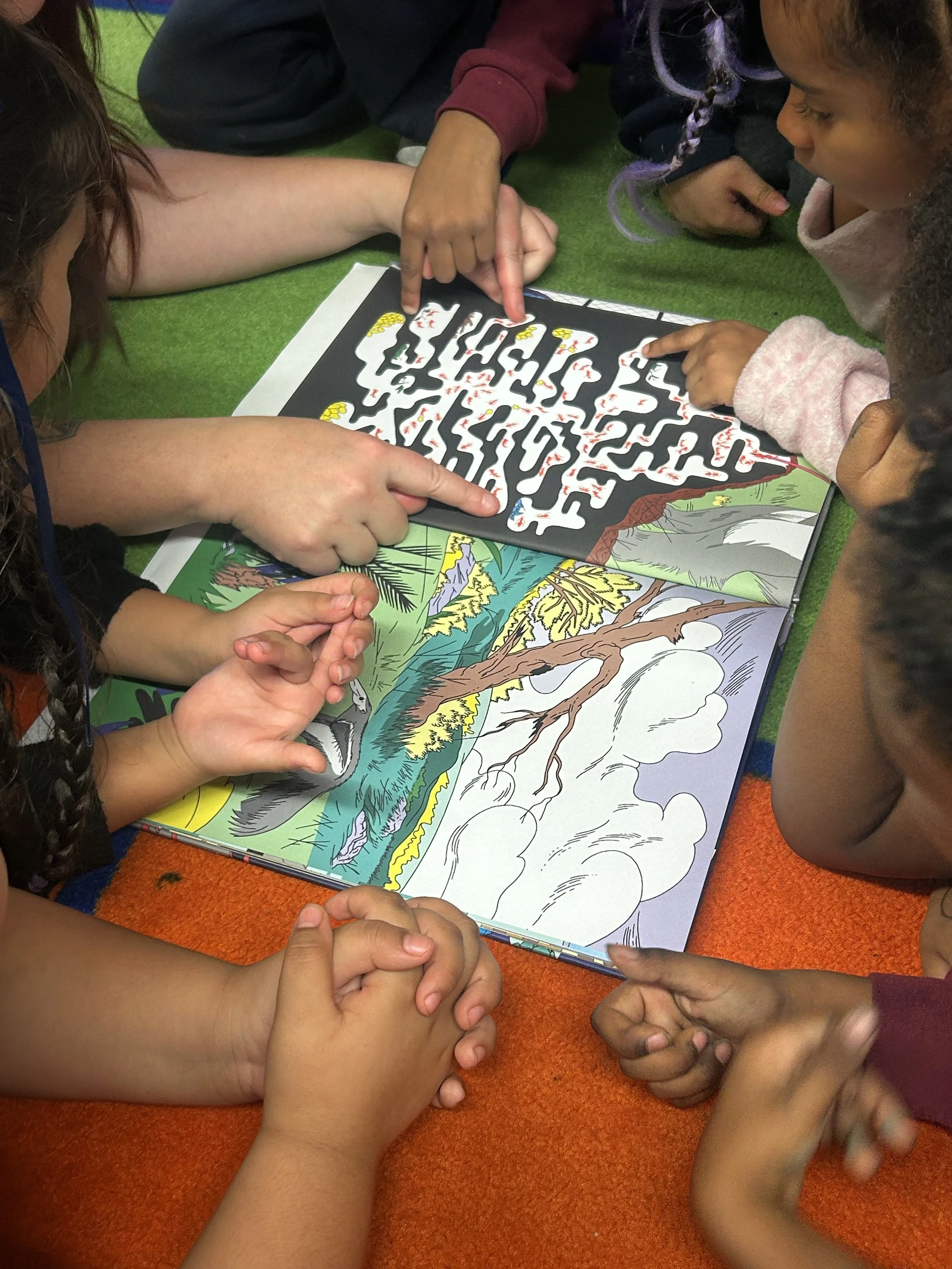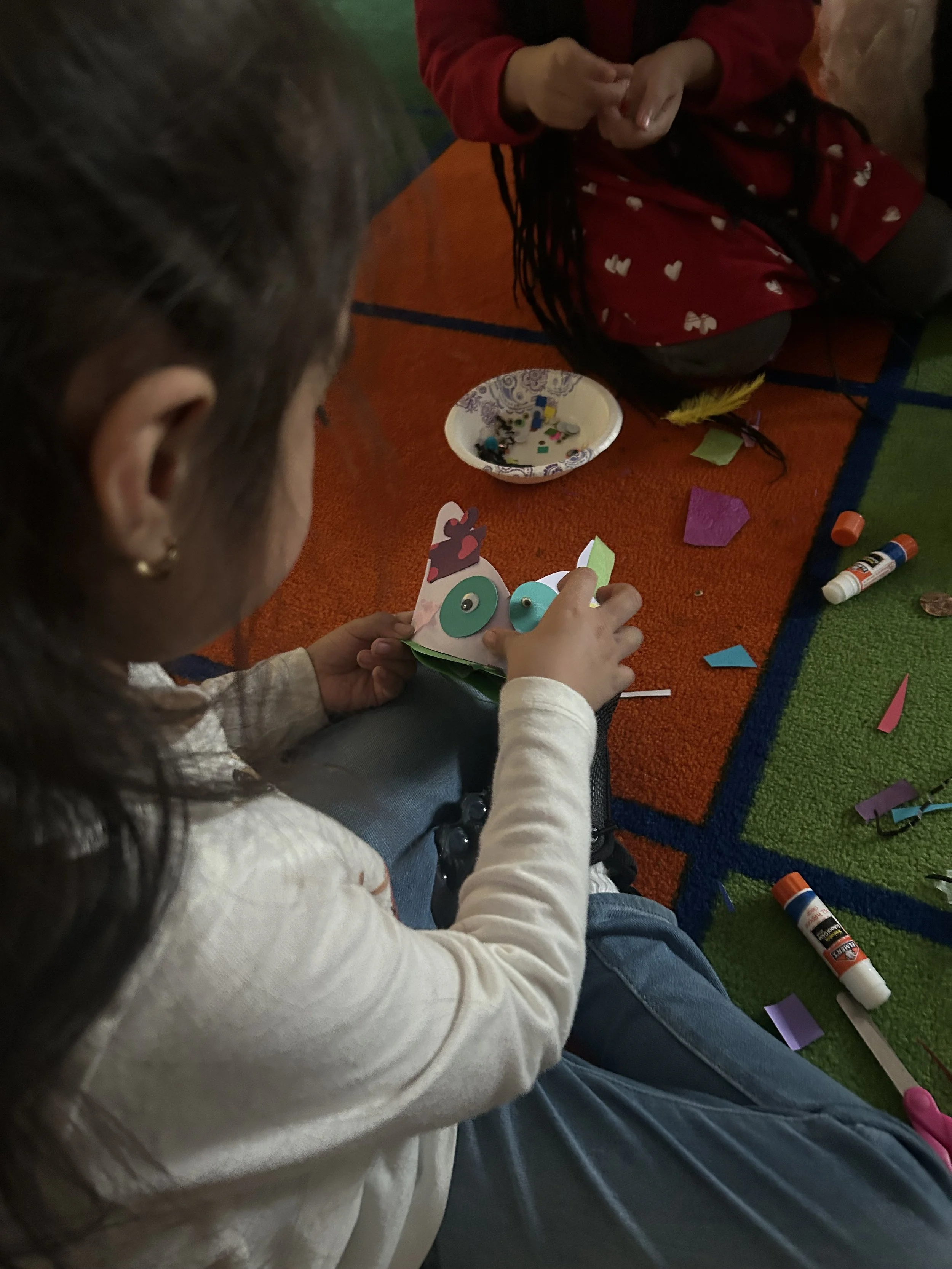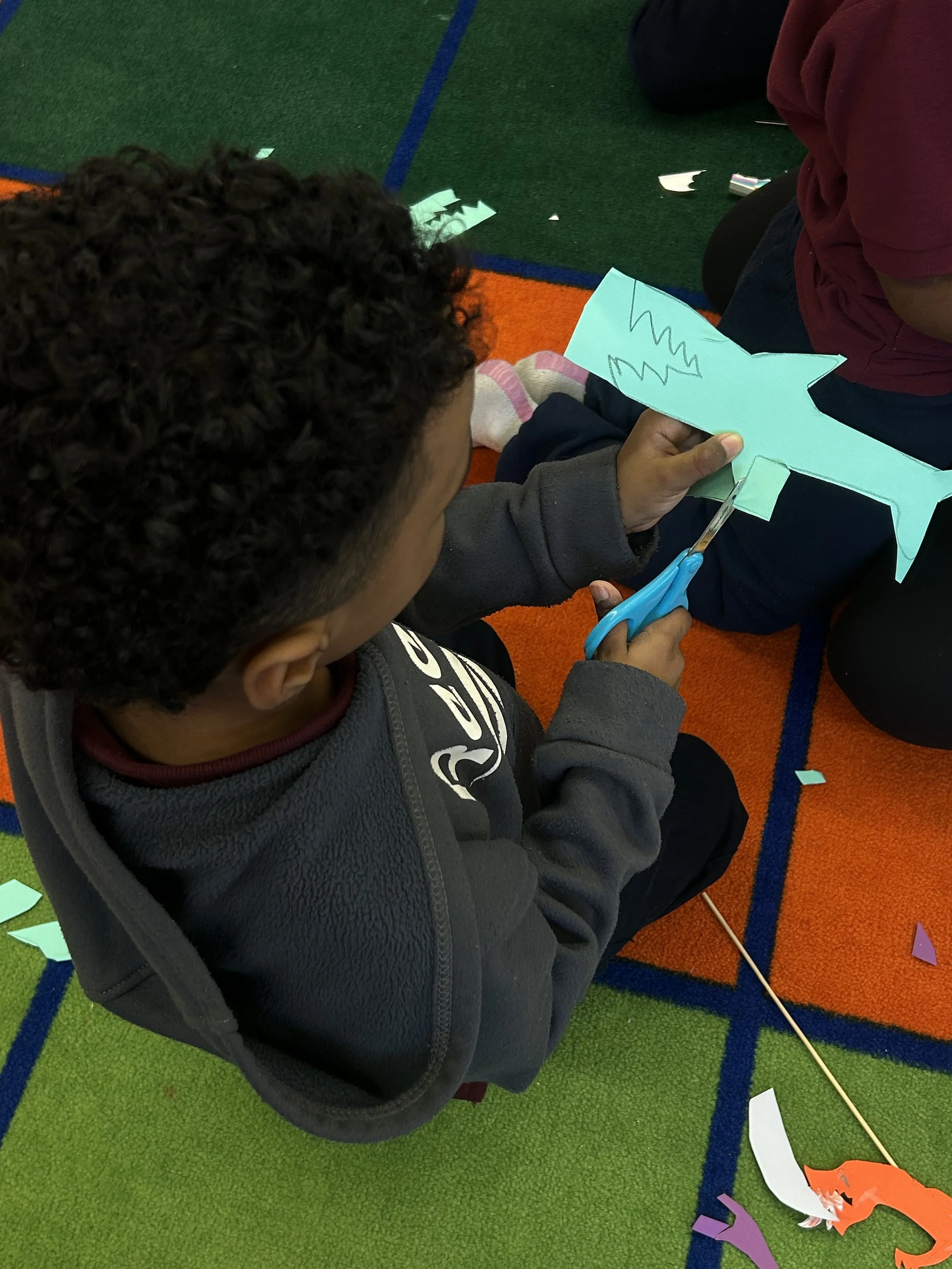Little Hands, Big Visions
Ayden showing off his blue hands
It was 2:45 on a Tuesday at PS 192 in Harlem, and the room was filled with excited kindergarten and first-grade students. We prepared for the day’s lesson, as always, with movements to release some pent-up energy. Some of us wiggled like worms, some of us flapped our “wings” like birds, while others stomped around like elephants. Laughter filled the room as we settled down to read a story.
Twenty minutes later, and the classroom began to hum with the quiet rhythm of scissors slicing through construction paper, as our young students began to work on this day’s art project.
The Big Picture
I had the opportunity this month to fill in as a Teaching Artist Assistant for a Creative Art Works Storytelling & Puppetry program. CAW Teaching Artist Abby Walsh and Teaching Artist Assistant-in-Training Yotzin Reyes are helping K–1 students develop reading readiness by connecting to children’s literature through artmaking and movement.
The lesson on the days I was sitting in was titled “We Built This City.” We started by reading the picture book “Free Fall” by David Weisner, a Caldecott Honor Award-winning book that invites readers into the dream of a young boy. In the dream, the boy travels through a variety of morphing landscapes. For example, in one whimsical illustration, a checkered comforter transforms into farm fields which, in turn, become a chess board. As we explored the scenes in the book and examined the interactive elements, we discussed how the landscapes shifted and evolved and how the characters changed to match those environments. We then brainstormed ways to incorporate similar ideas into our own project.
Building the City
Students working on a draft of their cityscape
Next, we began working on our own cityscape. We unrolled a long piece of paper on the floor and set out construction paper, glue sticks and other art supplies. Students were free to move around this blank canvas, using new-found inspiration from our reading, their own experiences—and their wildest dreams—to create elements of a fantastic metropolis. The result? A skyline adorned with dragons with rainbow scales and a bright sun fabulously reimagined with a cat tail and ears.
Populating the City
Students created paper puppets to navigate their fantastic city
As some students worked on the elements of the city, other students carefully cut out the shapes for the citizens who would soon live in this utopia: paper puppets! By strategically pinning the legs, arms, and heads of their puppet in the correct spots, students employed their fine motor skills and deepened their understanding of narrative. It was amazing to see the variety of characters students created on their own, but it was especially heartwarming to see students help each other to finish their puppets.
This lesson isn’t only about imagining a city; it’s about building the confidence to collaborate with other students and put one’s own ideas to paper. Drawing, coloring, and collaging together on a shared canvas fosters a sense of community, whereas making individual puppets allow students to contribute their own unique voices to a collective story.
“Children are born into the world with thousands of ways to communicate – ways that get stripped away, little by little, as they grow. For me, I meet them where they’re at and make sure to get on the ground with them, draw with them, be curious with them, and bolster those many different ways they try to teach us.”
Encouraging Students to Stretch
A big part of teaching K-1 students is encouraging them to try new things. For example, while others around her were already shuffling their cut-up pieces and pinning them together, one student held up her hand and called out for assistance. I began to explain to her how to cut the shapes when Abby encouraged me to let the student “lean into their iterative process.” In other words, let them try, and try again, to find their own solution. Before long, I noticed the student effortlessly gliding her scissors through the shapes she had traced on the paper – doing the very thing she had just insisted she could not do less than a minute ago.
One of our students cutting out the shapes of their puppet
Students making the puppets dance, talk, and interact with each other
A Somatic Approach
As their city and puppets took shape, students began to move energetically about the room. The young artists began playing with their puppets, interacting with the city, weaving their characters through the streets, creating impromptu conversations, and acting out scenes. This somatic approach, where both the mind and body are involved in the learning process, is what really solidifies connections to the literature.
By navigating their puppets through their city, they explored concepts of storytelling and collaboration in a way that felt natural and fun. This reinforced the themes of the lesson while also giving students a tangible sense of ownership over their stories and characters.
Traliana showing off her red hands!
Collaboration as a Lifelong Skill
At the heart of this lesson was collaboration. Each student’s contribution, whether coloring in a building, piecing parts of the puppet together, or just simply acting scenes out, became part of a shared vision. Through their teamwork, they learned to listen to each other, adapt their ideas, and celebrate their successes. By prioritizing the value of collaboration from an early age, CAW programs such as this not only foster teamwork among students, but also equip them with essential skills that will serve them throughout their lives.
Check out some of the process work done throughout the program below:
This Creative Art Works program is supported, in part, by the New York City Department of Cultural Affairs and the Cultural After-School Adventures (CASA) Initiative in partnership with the NYC Council and Council Member Shaun Abreu. This Creative Art Works program is also made possible by the New York State Council on the Arts with the support of the Office of the Governor and the New York State Legislature.
